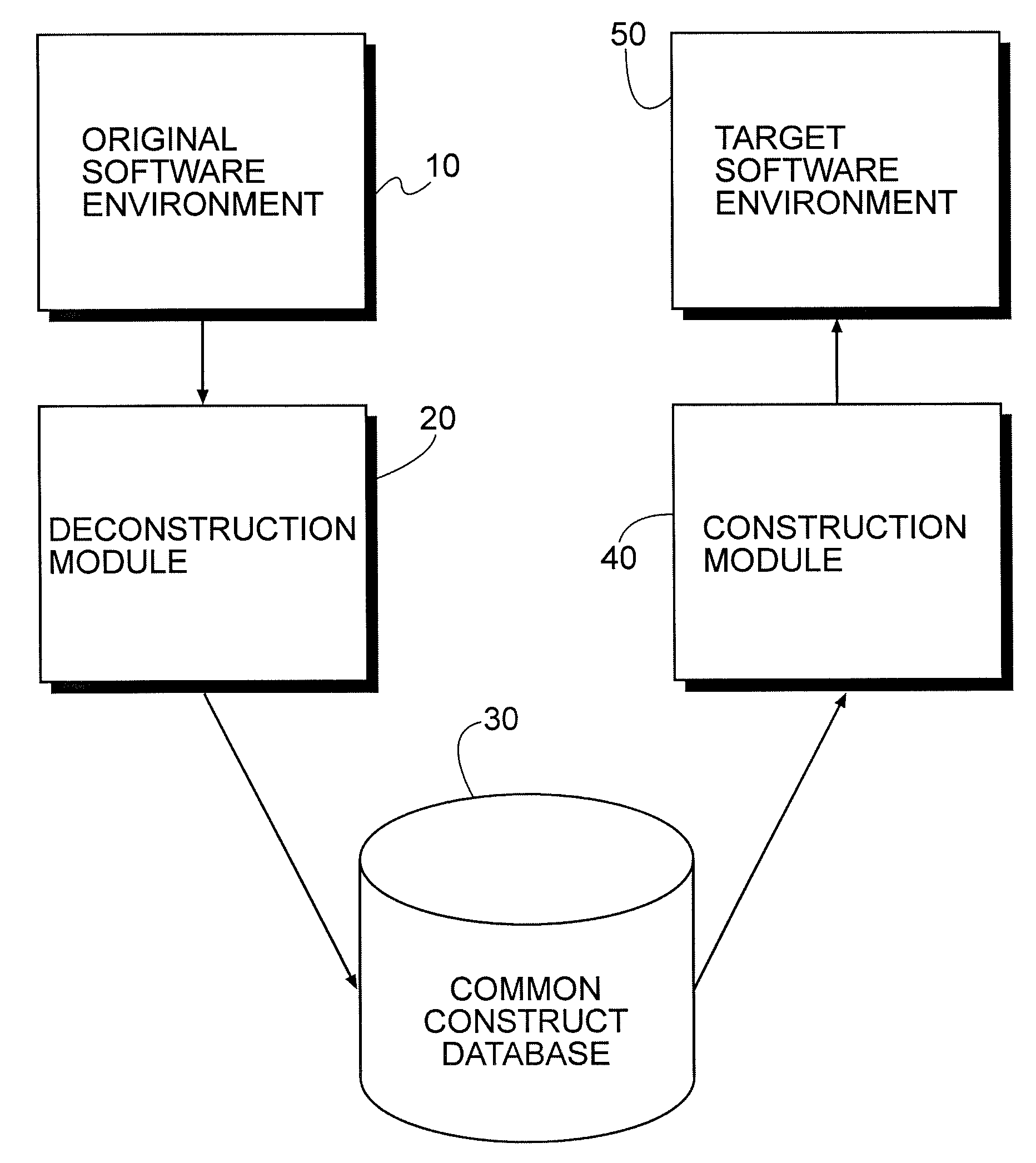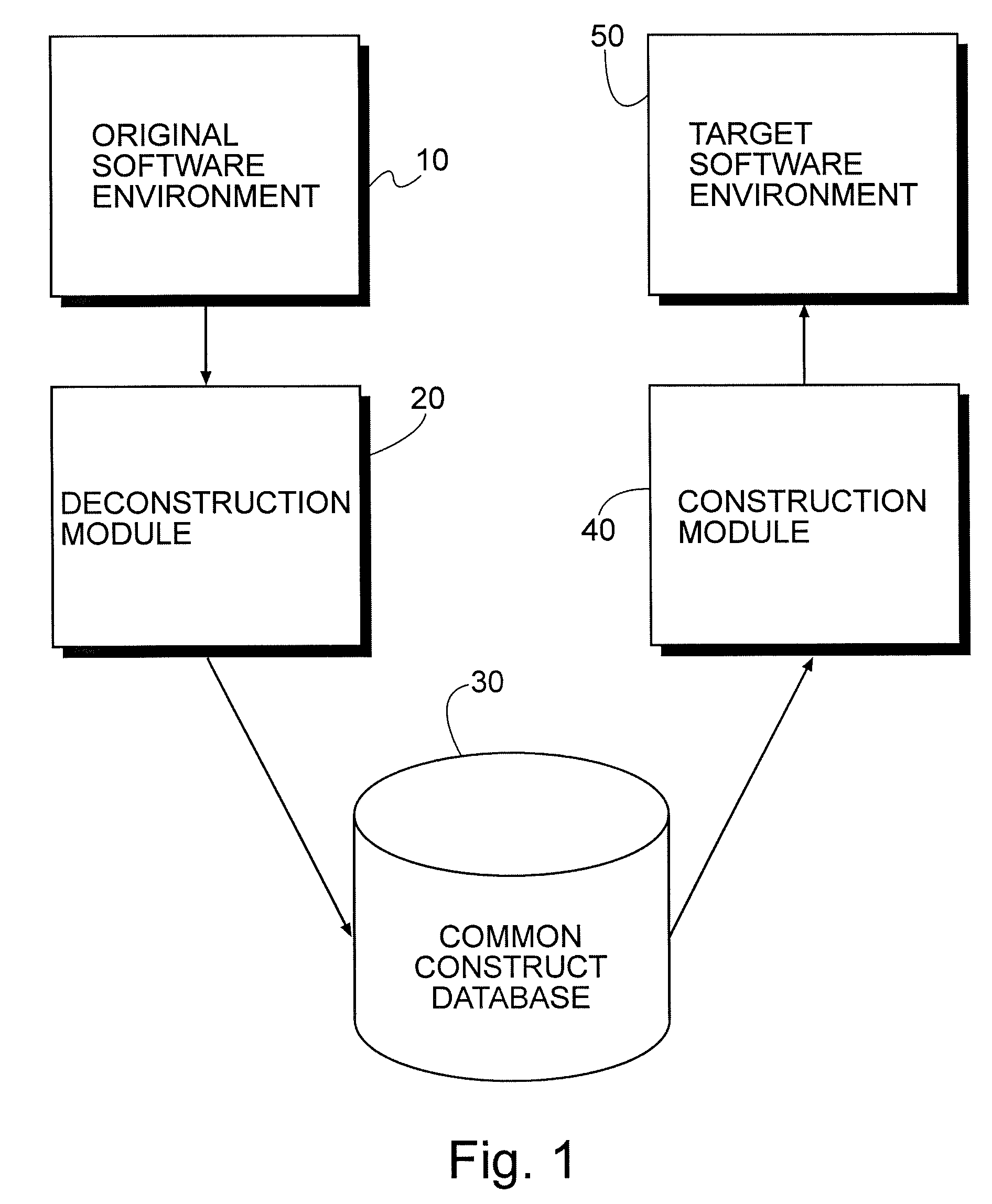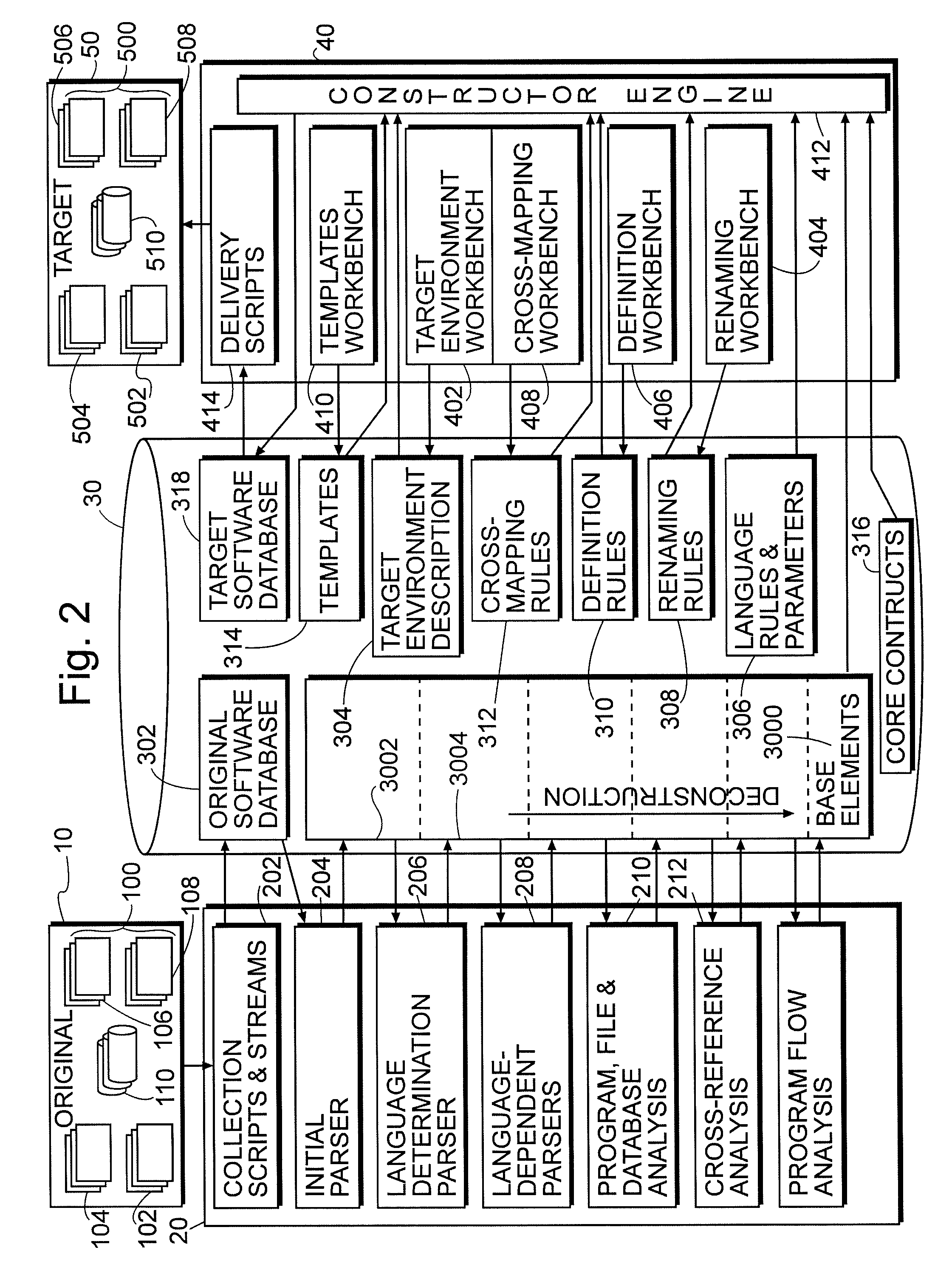Database and Software Conversion System and Method
- Summary
- Abstract
- Description
- Claims
- Application Information
AI Technical Summary
Benefits of technology
Problems solved by technology
Method used
Image
Examples
Embodiment Construction
[0039]An overview of a preferred embodiment of the method and system according to the invention is shown in FIG. 1. The original software to be converted exists in an original software environment 10 and may consist of various entity types. The original software is processed by a deconstruction software module 20 which breaks the original software down into its most basic constituents. The base constituents are stored in a common construct database 30. A construction software module 40 processes the base constituents to generate target software. The target software is stored in a target software environment 50 and may consist of various entity types.
[0040]The original software environment 10, the target software environment 50, the common construct database 30, the deconstruction module 20, and the construction module 40 are contained in at least one computer system. The computer system, well known in the art, has a central processing unit, memory, and input / output devices for inter...
PUM
 Login to View More
Login to View More Abstract
Description
Claims
Application Information
 Login to View More
Login to View More - R&D
- Intellectual Property
- Life Sciences
- Materials
- Tech Scout
- Unparalleled Data Quality
- Higher Quality Content
- 60% Fewer Hallucinations
Browse by: Latest US Patents, China's latest patents, Technical Efficacy Thesaurus, Application Domain, Technology Topic, Popular Technical Reports.
© 2025 PatSnap. All rights reserved.Legal|Privacy policy|Modern Slavery Act Transparency Statement|Sitemap|About US| Contact US: help@patsnap.com



